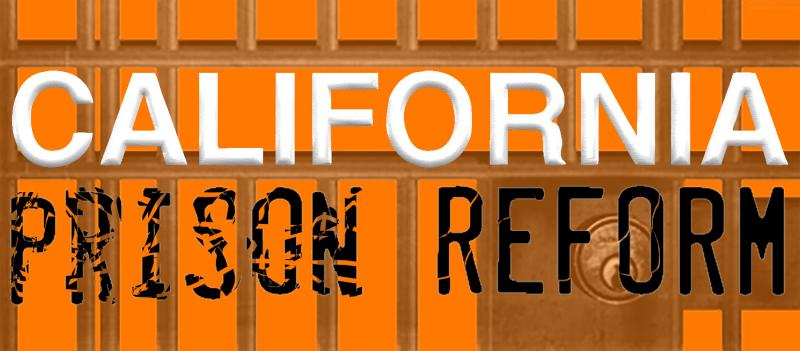California Prison Reform: Assessing Realignment

In California, the prison reform issue has not reached a unified frame that can be coupled with a solution. There is only one alternative for California, that is its obligation to reform, but the path this reform should take is not yet apparent in the long-term.
There is no dominant proposal other than state hands responsibility to counties. The disunity of messaging impacts the opportunities available for successful reform.
In response to a historic U.S. Supreme Court decision ordering California to reduce overcrowding in its state prisons, the state Legislature enacted the Public Safety Realignment Act (AB 109). In addition to diverting newly convicted non-violent, low-level inmates to county run jails, the law includes reforms to the parole system aimed at reducing recidivism. This policy solution couples with the problem of overcrowding, however, whether it also addresses the underlying causes of overcrowding remains to be seen.
As with any piece of comprehensive legislation, it is impossible to know how a law will play out on the ground after it is enacted. Despite its deficiencies it is clear that Realignment is here to stay.
The new policy shifted significant corrections oversight and funding from the state to its counties, including authority over most non-serious, non-violent, and non-sexual offenders. Two years after the enactment, Realignment has successfully shrunk the incarceration rate of the state. The prison population has significantly dropped, although not enough to satisfy the federal court’s target.
Realignment gave counties complete authority to determine how they would deal with the new influx of offenders. Some had well-developed probation and social services and others did not. As a result, Realignment is being implemented in very different ways. Officials throughout the state are now advocating for more coordinated approach, with common measures of performance and more resources to support staff, physical building, and services to achieve better results than the state did. The justice system is undergoing remarkable changes with Realignment, unprecedented in depth and scope.
However, there are concerns about the long-term benefits of the policy, many questioning whether or not it will eventually result in safer communities and lower crimes. Furthermore, serious questions remain about adequacy of funding and local capacity to absorb these changes.
One issue is the high number of stakeholders in the prison reform policy, accompanied by variying interests and ideas. From probation officials, public defenders, prosecuting attorneys, law enforcement officials, and private prisons, it has become more and more difficult to confluence their interests towards a unified goal.
SEE ALSO: CA Prison Reform: Meet The Stakeholders
Despite the various policy options, players, and decision-makers, majority agree that prison reform is inevitable because there are simply too many people in prison. After the Supreme Court ruling, California is obliged to implement reform, there is no room or much time left to waste. Realignment has been introduced to deal with this issue, save costs and improve the system.
Most stakeholders agree that California’s prison system is broken, and that innovation to fix the system is more manageable and therefore more likely at the county level where officials have more flexibility. Communities are also better places to support successful prisoner reentry than the state, for example with transitional housing, jobs, and medical and mental health services. Reducing reentry can significantly reduce the prison population.
Furthermore, there are many distinct visions, frameworks, and stakeholders that influence how the prison reform issue is tackled and what the outcome will be in the long term.
One framework purposes that counties provide alternatives to incarceration for many low-level offenses. More effective crime prevention tactics, including drug treatment, mental health and job placement programs advocates urge for more funding towards these initiatives, which they believe is a solution to the problem of overcrowding in the long-run. Public opinion polls on California prison overcrowding indicate that legislation that involves treatment over incarceration is also favored by the public. Advocates for this type of reform believe that these programs will keep people from returning to jail.
Another framework for prison reform has been the debate over drug sentencing laws. Senator Mark Leno (D-San Francisco) introduced SB 1506, which would have added California to the list of 13 states, the District of Columbia, and the federal government which currently treat possession of drugs for personal use as a misdemeanor rather than a felony.
According to the Legislative Analyst’s Office, the bill would have saved the state and county governments a billion dollars over the next five years. This law also would have also reduced recidivism by eliminating the lifetime barriers to employment, housing, and education that accompany felony convictions.
Since 1980, the State of California has built more than 20 prisons, and its prison population has increased about fivefold. There is no way to meet supply with demand in this case because the numbers are too great and that won’t change until laws in place are evaluated and other options besides jail are funded to keep people out of the system.
Realignment, therefore, creates important opportunities for counties to adopt creative measures to help the state fix the broken prison system. Eventually, these initiatives will be critical to the long-term success of the policy.
If successful in prison reform, California can be a significant example for all states that need to reform their prison systems. Realignment is the biggest shift in California corrections policy in decades. Thus, it is important to assess the issue carefully to ensure that policy opportunities are not missed.
Reach Executive Producer Syuzanna Petrosyan here. Follow her on Twitter.



